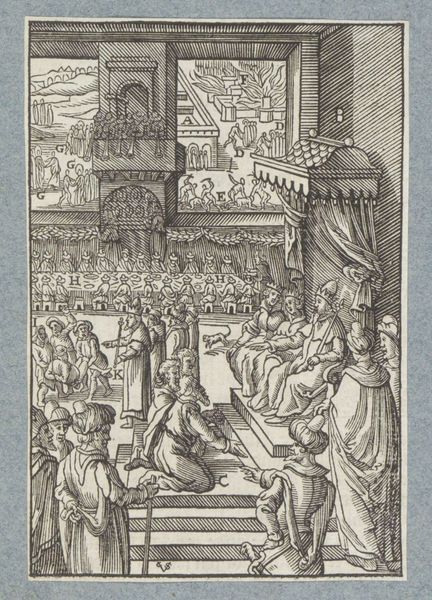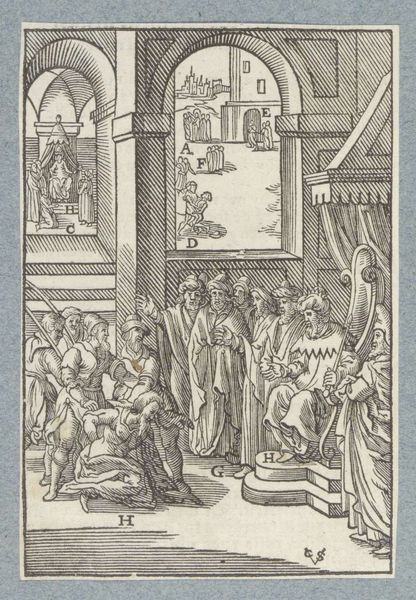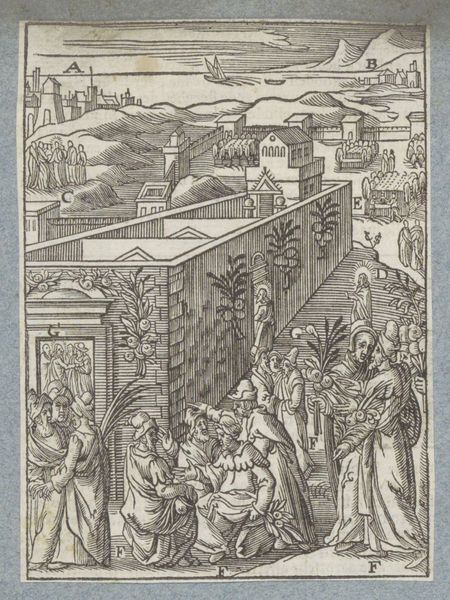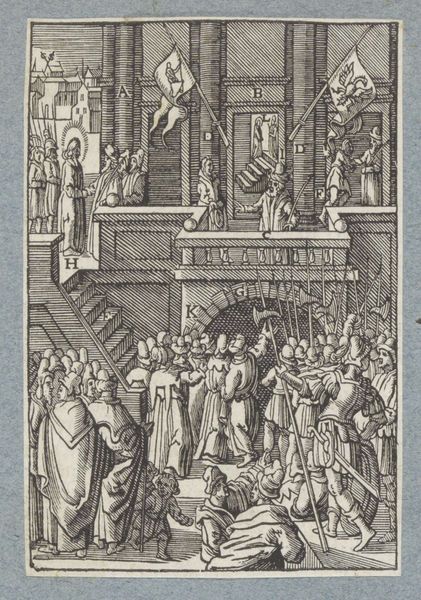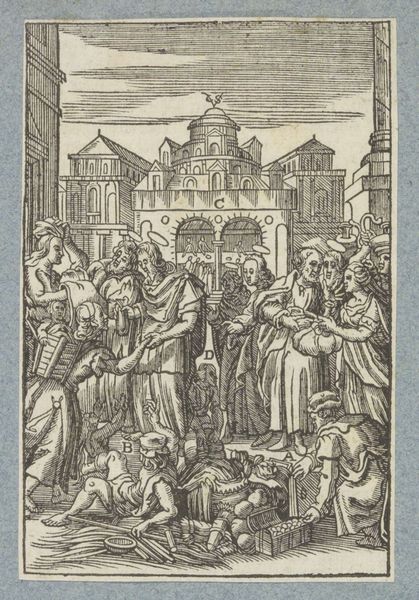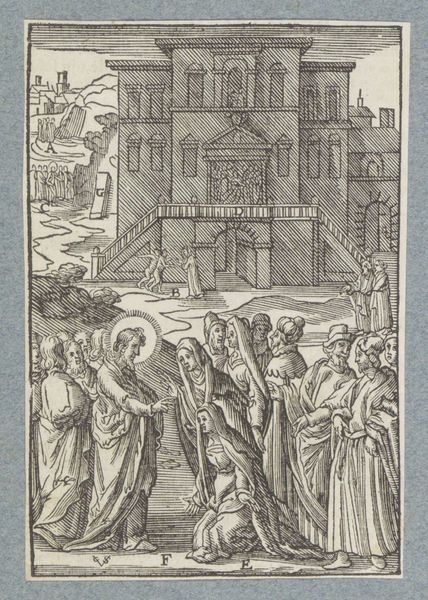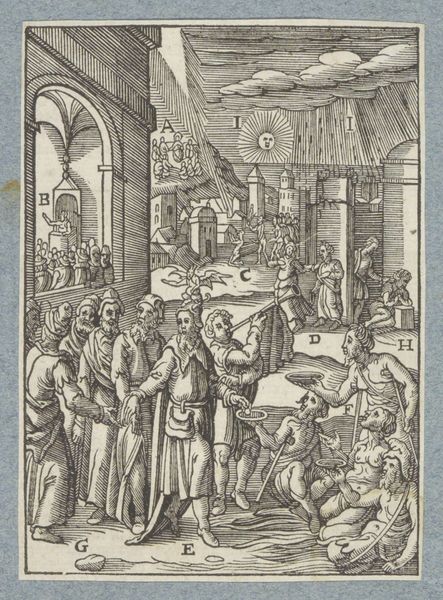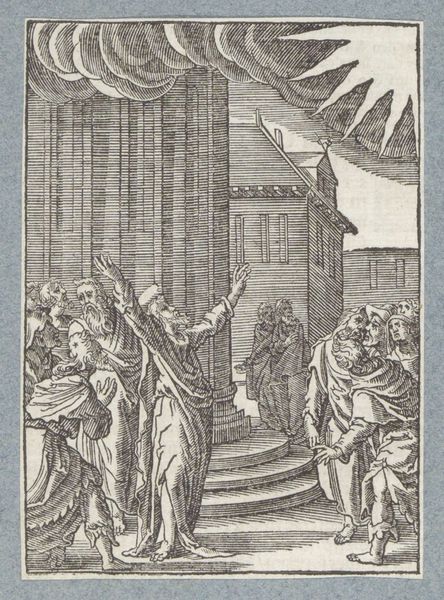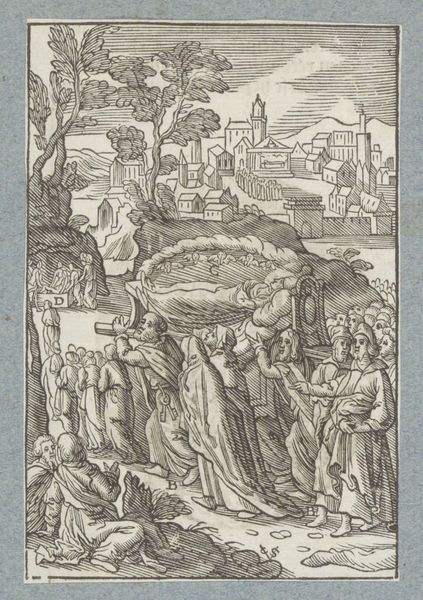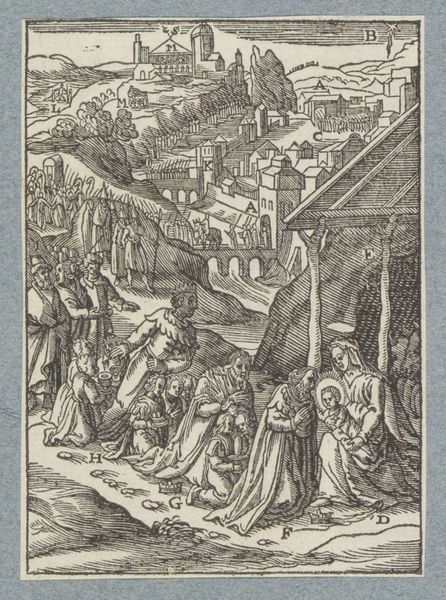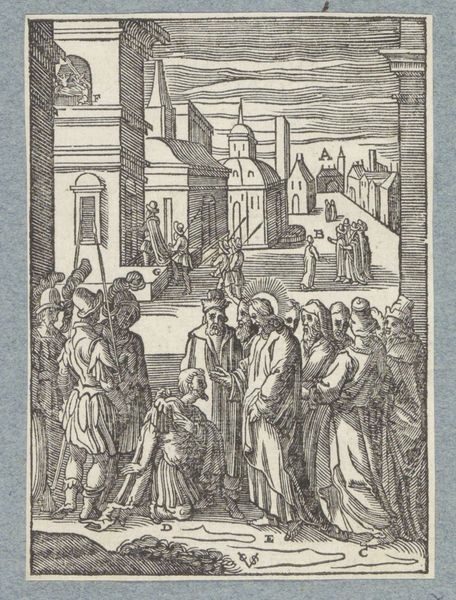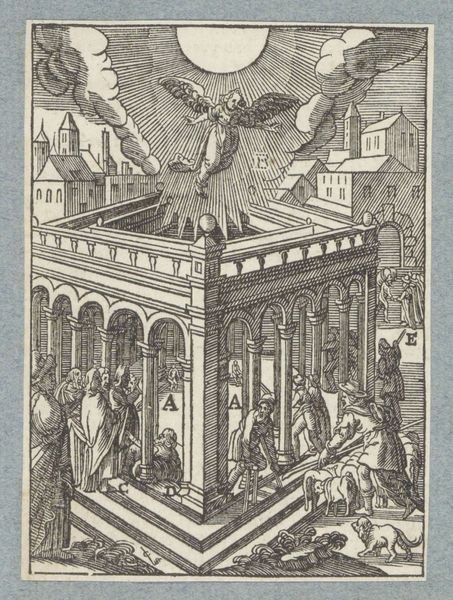
drawing, print, ink, engraving
#
drawing
#
comic strip sketch
# print
#
pen sketch
#
sketch book
#
landscape
#
11_renaissance
#
personal sketchbook
#
ink
#
sketchwork
#
pen-ink sketch
#
pen work
#
sketchbook drawing
#
history-painting
#
storyboard and sketchbook work
#
sketchbook art
#
engraving
Dimensions: height 102 mm, width 74 mm
Copyright: Rijks Museum: Open Domain
Christoffel van Sichem II created this woodcut, “Verzoeking in de Woestijn,” which translates to “The Temptation in the Desert,” in the Netherlands, sometime in the early to mid-17th century. The print depicts the Devil’s three temptations of Christ, from the Gospels of Matthew and Luke. We see Jesus, identifiable by his halo, in at least three separate moments in the image. The format of a series of images in one, the bird’s-eye perspective, and the generally crowded composition are recognizable features of Northern European prints from this period. The Reformation had swept through the Netherlands in the previous century, resulting in a population that was largely Protestant, yet still deeply engaged with the Bible. The popularity of this image suggests that it spoke to the religious sensibilities of its time. By consulting a variety of sources, from theological commentaries to histories of the printmaking trade, we can begin to get a richer sense of the social world in which an image like this one found its meaning.
Comments
No comments
Be the first to comment and join the conversation on the ultimate creative platform.
